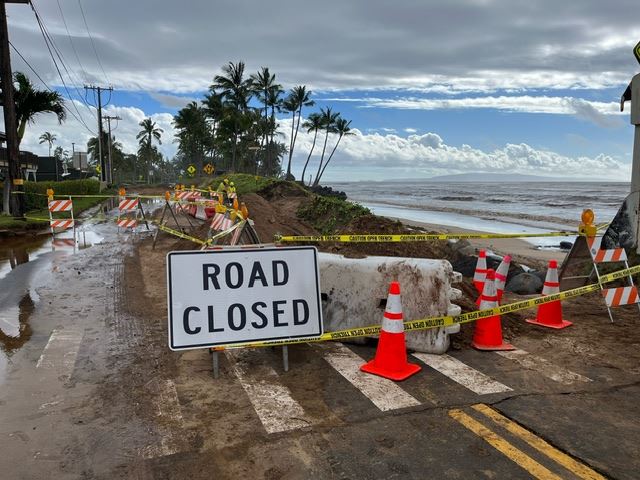
In the realm of governance and public policy, few issues draw as much attention and contention as the allocation of funds for road construction. Roads are the arteries of modern civilization, facilitating commerce, connecting communities, and enabling the movement of people and goods. However, the process of funding road construction is far from straightforward. It is imbued with political considerations, economic implications, and environmental concerns, making it a complex terrain to navigate.
Understanding the Dynamics
At its core, the politics of road construction funding revolves around the allocation of scarce resources. Governments must decide how to distribute taxpayer money among competing priorities, such as healthcare, education, defense, and infrastructure. Within the realm of infrastructure, roads often vie for funding alongside other essential projects like bridges, railways, airports, and public transit systems.
The allocation of funds for road construction is influenced by a myriad of factors, including:
1. Economic Priorities:
Governments prioritize projects that promise to stimulate economic growth, create jobs, and enhance productivity. Investments in road infrastructure are often seen as catalysts for economic development, as they improve access to markets, reduce transportation costs, and attract businesses to underserved areas.
2. Political Considerations:
Road construction projects can be potent tools for politicians to demonstrate their commitment to serving their constituents. Earmarking funds for roads in key electoral districts or swing states can sway voter sentiment and bolster reelection prospects. Thus, the allocation of road construction funds may be driven by political expediency rather than purely economic rationale.
3. Environmental Sustainability:
In recent years, concerns about environmental sustainability have exerted a growing influence on infrastructure investment decisions. Governments are under pressure to prioritize projects that minimize carbon emissions, protect natural habitats, and promote alternative modes of transportation, such as cycling and public transit. This shift towards eco-conscious infrastructure planning has prompted debates about the environmental impact of road construction projects and the need for greener alternatives.
4. Urban Planning and Community Development:
The layout and design of road infrastructure have profound implications for urban development and community well-being. Investments in roads must be aligned with long-term urban planning goals, such as reducing congestion, improving safety, and enhancing accessibility for pedestrians and cyclists. Community engagement and consultation play a crucial role in ensuring that road construction projects meet the needs and preferences of local residents.

Challenges and Controversies
Despite the noble intentions behind road construction funding, the process is fraught with challenges and controversies:
1. Budgetary Constraints:
Governments often face budgetary constraints that limit their ability to fund all proposed road construction projects. Tough decisions must be made about which projects receive funding priority, leading to disagreements and dissatisfaction among stakeholders.
2. Allocation Bias:
Critics allege that the allocation of road construction funds is often influenced by political favoritism and pork-barrel politics. Certain regions or interest groups may receive disproportionately large shares of funding, leading to disparities in infrastructure quality and accessibility.
3. Environmental Impact:
The environmental footprint of road construction projects, including habitat destruction, air and water pollution, and carbon emissions, has raised concerns among environmental advocates. Balancing the need for infrastructure development with environmental conservation poses a significant challenge for policymakers.
4. Maintenance Backlog:
In addition to funding new construction projects, governments must allocate resources for the maintenance and repair of existing road infrastructure. Neglecting maintenance can lead to deteriorating road conditions, increased accident risks, and higher long-term costs.
Towards a Sustainable Future
Navigating the politics of road construction funding requires a holistic approach that balances economic, political, social, and environmental considerations. Key strategies for promoting sustainable infrastructure development include:
1. Transparent Decision-Making:
Governments should strive for transparency and accountability in the allocation of road construction funds, ensuring that decisions are based on merit rather than political expediency. Engaging stakeholders in the decision-making process can help build trust and foster consensus.
2. Multi-Stakeholder Collaboration:
Effective infrastructure planning requires collaboration among government agencies, private sector stakeholders, civil society organizations, and local communities. By leveraging the expertise and resources of diverse stakeholders, governments can develop more inclusive and resilient infrastructure solutions. If you are seeking a source of inspiration and guidance about the politics of road construction funding, visit Line Marking Pro for further info.
3. Innovation and Technology Adoption:
Advancements in technology, such as smart transportation systems, renewable materials, and eco-friendly construction techniques, hold promise for enhancing the sustainability of road infrastructure. Governments should embrace innovation and invest in research and development to drive progress in infrastructure planning and design.
4. Long-Term Planning:
Infrastructure investments should be guided by long-term strategic vision rather than short-term political considerations. Governments must prioritize projects that offer lasting benefits in terms of economic growth, social equity, and environmental stewardship, even if they entail upfront costs and political risks.
Conclusion
The politics of road construction funding is a complex and multifaceted issue that requires careful deliberation and strategic decision-making. By prioritizing sustainability, transparency, and collaboration, governments can navigate the challenges of infrastructure investment and pave the way for a more resilient and equitable future.
